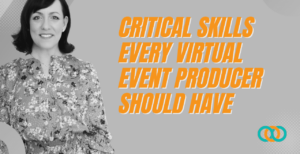Getting a new employee onboarded can take several days to several weeks. But when you bring on an instructional design consultant rather than an employee, you have less time for onboarding. Hiring managers can’t waste several weeks getting the ID consultant up to speed! Don’t worry! These contract professionals are used to adjusting to a new team every few months and they only need a little help from you – their client supervisor. In this article, I’m going to help you prepare for a fantastic engagement with your next contract instructional designer.
As with any project, you’ll want to do some preparation ahead of time and plan a great “kick-off meeting” for the project with the consultant. Since this is a consultant that is unfamiliar with your company, you’ll need to prepare differently than you would for a kick-off meeting with an employee. For example, the consultant will be familiar with working on the type of project such as sales onboarding or maybe a high-potential development program, but they will be very uninformed about things such as file systems, templates, company terms, and project workflows that are specific to your company. So, aside from the usual project parameters like “what does success look like” or “how will we measure this”, you’ll want to address these items:
Budget
What are the budgeted hours for the consultant? You might have told them you expect this project to take 12 weeks, but did you tell them what that means in billable time? It might seem obvious to you, but someone that hasn’t worked with you before may not know your standards on how long each deliverable should take. Course development efforts can vary widely in the hours required depending on the standards of the department. Take the guesswork out and provide your expected budget – in writing. In fact, providing expected hours needed for each deliverable may seem like micro-managing, but it will help your consultant really understand your expectations.
Development Resources
Where are all the digital resources? Your consultant won’t know where to find your templates, style guides, photos, or artwork assets. Go ahead and have the location documented and provide it at the kickoff meeting. Also answer questions such as:
-
- What if you don’t have the resources needed? Can the consultant purchase it?
- What is the process for creating new assets such as custom graphics?
- Who should the consultant ask if they can’t quickly find the answer they need about a resource?
Providing these answers up front and in writing will save a lot of time and frustration for everyone.
Reporting Deliverables
As with any large project, you will already have created an overall timeline and, at minimum, a high-level project plan that you will share with the consultant at kickoff. But remember, you’ve never worked with this consultant before. It’s also likely that the consultant will be doing quite a bit of work from their virtual office instead of at your place of business. Because of this, you may want to think through timelines for each deliverable. For example, if the consultant is working on a three-week ILT course, in what increments do you want to review the work? Should the consultant just keep working until the deliverable is finished? Should they show you incremental steps toward the finished product? Or perhaps you would be more comfortable having a weekly review of the work accomplished? Every client has different standards on how frequently and at what stages they want to review deliverables. Thinking this through and discussing it with your consultant up front will avoid confusion and potential anxiety about where all deliverables stand.
Design and Development Process
What is your department’s design and development process? There are many different work models for designing a course or program. Provide a written description of the stages you go through. You won’t need to teach instructional design, but a quick overview of the stages you expect each designer to follow will save trouble. Maybe you require an audience analysis and learner personas to be created? Maybe that stage is skipped in your department. Maybe your team has a model where the assessment questions are written first or maybe you prefer them written last. Let the consultant know. Once you’ve put this together, you can share it on every project with a consultant and with your new full-time employees as part of their orientation.
Good versus Bad Samples
Provide the consultant with samples of what “good” looks like for each deliverable. What are the elements of a good eLearning course? Walk them through the expected levels of quality and what is important to you. It’s also very helpful to provide what instructional designers call “non-examples”. In other words, what things have you seen in the past that are considered failures in a course or program? Show them deliverables that were unacceptable and discuss why they were rejected. These examples will go a long way towards making sure you only receive deliverables that are acceptable.
Communication
Everyone has a different preferred style of communication. What are the standards in your department? Phone calls? Instant message? Text? A shared document? Status reports? Email? There’s also the matter of how often? Daily? Weekly? Do you only want to hear from team members on deliverable due dates or when there is a problem? What about if the consultant sees a risk of meeting a deadline? How should that be communicated? Writing up each of these preferences as part of the first day kickoff package will really help the consultant communicate with you on your terms. Also, introducing the consultants’ role by sending out a communication to anyone the consultant may be working with in advance will set them up for success.
SMEs and Meetings
Will the consultant be responsible for setting up their own meetings with SMEs? What about review meetings? Can the meetings be recorded? Are there any company culture limitations around setting up or running meetings the consultant should be aware of? How many reminders to the SME are acceptable before they escalate the issue? Are there any rules about how to communicate with the SMEs?
Logistics
If your consultant will be working onsite, please provide some basic logistics. These include:
- Expected arrival times.
- Where to park.
- Dress code including any casual days.
- Lunch – what do most people do?
- Can they make personal phone calls at work?
- How much notice do you require if they must take time away for personal reasons?
Does This Seem Like a Lot?
Preparing for a new consultant’s start can seem like a huge project, but we can help make it simple. TrainingPros helps both you and the consultant have a successful kick-off discussion that covers all of these critical items. It’s simple, just follow the checklist we provide for each of you! That’s why our consultants have a 96% success rate on client projects. Schedule time with us today to find out about how easy it is to get started with a top Instructional Design Consultant.
- 0share
- LinkedIn0
- Twitter0
- Facebook0
- Love This0











